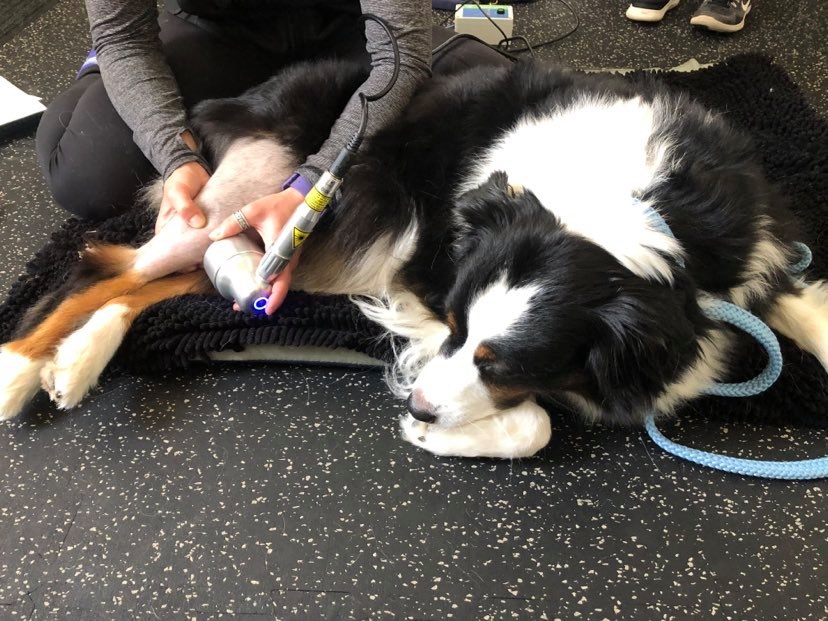|
In any sport our dogs compete and train in there is always a potential for injury. The sport of agility, however, has a high degree of physical challenge and with that also comes a higher risk of injury. As a canine physio, my personal view is that an active lifestyle far outweighs the potential risk of an injury. One key part of injury prevention is becoming aware of the potential injuries your dog may experience in their sport as well as aspects of the sport (e.g. certain movements or obstacles) that are known to cause more strain on the dog’s body. Knowing the potential injuries of the sport means we can better prepare our dogs to avoid injuries and begin to recognize the signs and symptoms of an injury while it’s still in the early stages. This is critical as it’s not always obvious that our dogs are hurt or injured. With any high drive sport, particularly in agility, it is often very subtle signs that point towards an injury rather than something obvious or dramatic (e.g. severe limp). Our dogs have a lot of heart and love for the game and slowing down (due to pain or discomfort) does not come naturally to them. When their adrenaline is spiked, these dogs can push through anything! Although this may be desirable from a performance standpoint, it is can make injury identification far harder!!
In Part Two of the Agility Sport Breakdown, we will review the obstacles and movements that cause more strain on the agility dog and then review potential injuries and the common signs and symptoms of these injuries.
0 Comments
One of your dog’s favorite activities to do with you is also why I see a lot of dogs in my clinic. I’m talking about fetch and it’s not all it’s cracked up to be! Playing fetch with your dog can place a lot of stain on their body and is also a leading cause of many of the injuries I see walk or, more accurately, limp through my doors.
In this week’s blog I take a look at the game of fetch and explain why it’s something you should think twice about before doing it with your dog. Do you know that cranial cruciate ligament (CCL) injuries are one of the most commonly seen sporting dog injuries seen by veterinarians?
If you’re in dog sports, chances are you know someone whose dog has suffered CCL injury. Have you ever found yourself asking how a CCL injury occurs and how you can make every best attempt to prevent your dog from suffering this injury? In this week’s blog, we take a deep dive into CCL injuries, how they occur, what to look out for, and how a CCL injury does not mean the end of your dog’s sporting career. |
AuthorCarolyn McIntyre Archives
June 2024
Categories
All
|




 RSS Feed
RSS Feed